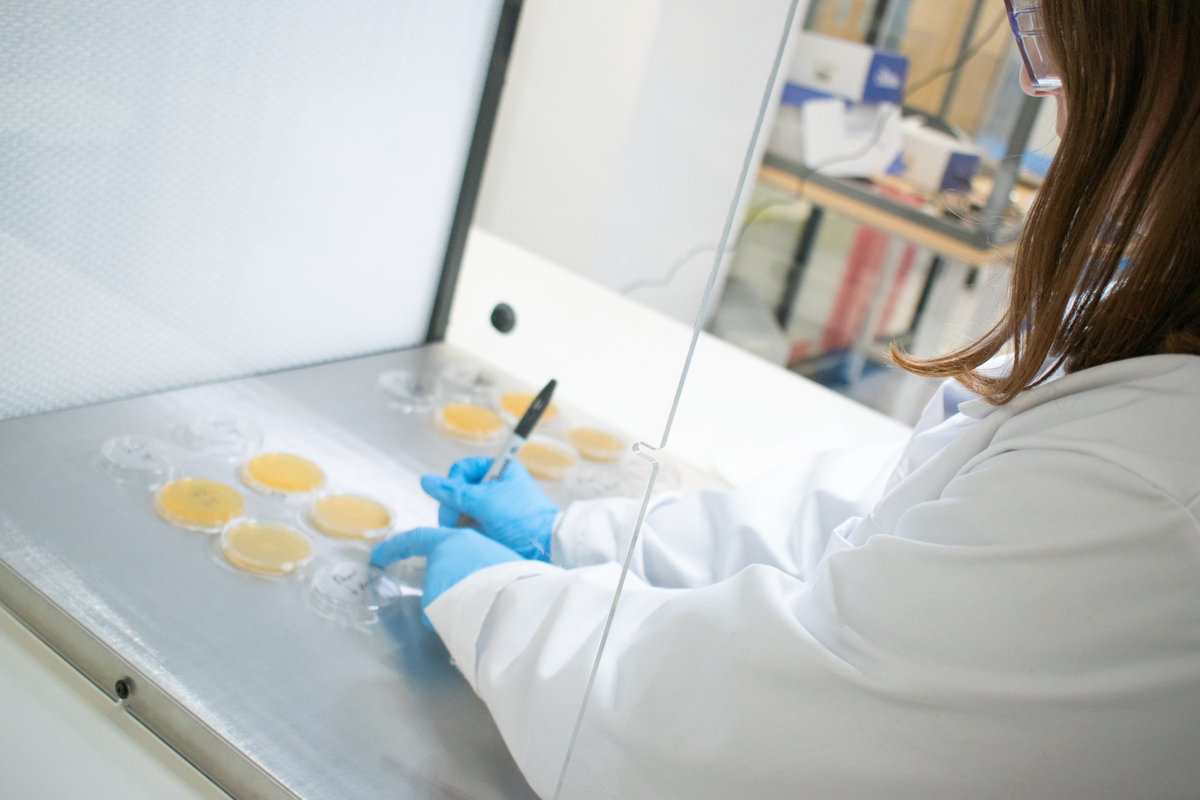Laminar Flow Hood Uses in Microbiology

Laminar flow hoods are especially useful when you need to maintain a clean and germ-free environment for your experiments. These systems create a controlled environment by filtering the air to remove any airborne contaminants. Laminar flow hoods are especially useful in experiments that involve safe and non-harmful substances, requiring aseptic environment.
Laboratories working with sensitive biological samples, including cell cultures, microbiological experiments, and pharmaceutical preparations, often require clean air workspace. They benefit from the use of laminar flow hoods with HEPA-filtered air. These hoods are widely used in research and industrial settings as they keep the dust, microbes and other airborne particles away from the delicate material.
Laminar Flow Hood Uses - Best Practices
Preparing the work area
Ensure that the hood is turned on for at least 15 minutes before starting your work. This ensure proper and stable airflow. Wipe down the interior surface of the hood with 70% ethanol solution before and after use. The interior should be wiped down in between samples as well. Only put necessary equipment inside the hood to maintain uninterrupted airflow.
Personal preparation
Wear sterile gloves, a lab coat, and a face mask (if necessary) to minimise contamination from your skin and breath. If possible, work with slow and controlled movements so you don't disrupt the airflow. Avoid blocking the airflow with large objects or your hands and arms.
Handling samples and equipment
Use sterile tools, such as micropipettes or loops, and avoid contact with non-sterile surfaces. When inoculating agar plates, do not open them outside of the clear airflow. Flame sterilise inoculating loops and other heat-resistant tools before and after use.
Laminar Flow Hoods Uses in Microbiology
A laminar flow hood can be tailored to suit the needs of specialised work, making them highly adaptable. This means they can be designed and equipped to meet the unique requirements for specific lab tasks. However, they are not limited to specialised work; they are useful for general laboratory techniques commonly found in microbiological settings. Within these hoods, scientists can carry out various tasks, such as preparing culture media plates or growing microorganisms.
One very typical use is the preparation of agar plates. Agar plates are a fundamental tool in microbiology, used for growing and isolating microorganisms. These cabinets are well-suited for this task because they help maintain the sterility of the agar, and prevent any unwanted particles from contaminating the growth medium.

In cell culture work, maintaining a sterile environment is essential to the integrity and purity of the cultures being studied or grown. When used correctly, the laminar flow hood creates a controlled and clean workspace that helps protect the cell cultures from potential contamination. The controlled air flow serves as a protective shield, ensuring that the cell cultures and any work conducted remain uncontaminated. It is an indispensable tool in tissue culture laboratories where maintaining the purity of the cultures is of utmost importance for accurate and reliable results.
Laminar Flow Hoods Uses in Pharmaceutical Research
In the pharmaceutical and compounding sectors, precision and cleanliness are important. These industries produce drugs and chemicals that are used for medical purposes, and any contamination can be extremely detrimental. Even the tiniest particles or microbes can compromise the quality and safety of pharmaceutical products. To maintain the highest standards of quality and safety, laminar flow hoods are employed, which ensure that the drugs and chemicals being processes remain uncontaminated throughout their production and handling.
Laminar Flow Hood

Learn More
In order to conduct PCR in a laminar flow hood, your set-up must include a UV light, like the Ossila laminar flow hoods. The built in UV light within our hood enables you to clean the workspace before and after each use.
Read more...In any laboratory setting, maintaining a sterile environment is essential for the success of experiments. Especially when you are working with cultures, tissues, or microbial samples.
Read more...